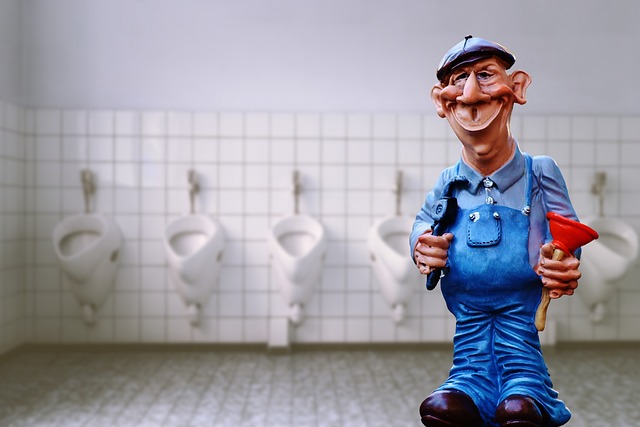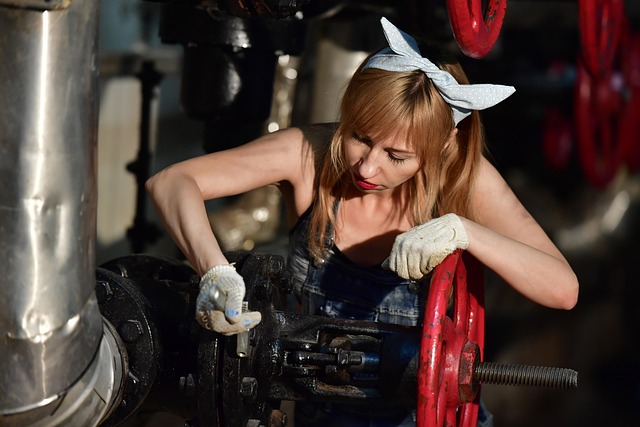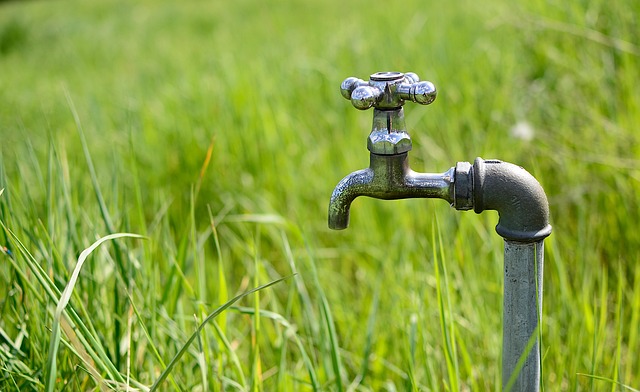Identifying and addressing garbage disposal issues promptly prevents damage. A qualified plumber diagnoses problems, provides tailored repairs, and ensures smooth operation. Essential tools include wrenches, pliers, screwdrivers, and specialized parts for replacements. Basic troubleshooting covers obstructions and flywheel checks; complex issues require professional help. Regular maintenance involves clearing debris, running hot water, and annual inspections by licensed plumbers.
Looking to restore smooth operation in your kitchen? Learn how to repair a garbage disposal with our comprehensive guide. From identifying common issues like grinding noises and clogs to performing step-by-step fixes, we’ve got you covered. We’ll walk you through the tools needed, basic troubleshooting, and even preventive maintenance tips to keep your disposal running smoothly. Skip the costly plumber visits and tackle these repairs yourself!
- Identify Common Garbage Disposal Issues
- Tools Needed for Repair
- Troubleshooting Basic Malfunctions
- Step-by-Step Disposal Fix Guide
- Preventive Maintenance Tips
Identify Common Garbage Disposal Issues

Identifying common garbage disposal issues is the first step in ensuring smooth operation. Many problems can be traced back to three primary categories: foreign object ingestion, mechanical malfunction, or buildup of grease and debris. Foreign objects like plastic, metal, or bones can cause immediate clogs while mechanical issues such as broken blades or worn-out parts lead to partial or complete stoppage. Regular buildup of grease and food scraps can also hinder efficient grinding, resulting in slow drainage or excessive noise during operation.
A qualified plumber is often the best resource for diagnosing these issues accurately. They have the expertise to check for blockages, inspect internal components, and recommend repairs or replacements tailored to your specific model. Prompt attention to these common problems can prevent more serious damage and costly repairs down the line.
Tools Needed for Repair

When tackling garbage disposal repairs, having the right tools is essential. A plumber’s toolkit is a must-have for any DIY project involving plumbing fixtures. Basic tools such as wrenches (both open and adjustable), pliers, and a screwdriver are indispensable for disassembling and reassembling components. For more intricate tasks, consider adding specialized tools like a pipe wrench or a set of channel locks to your collection, ensuring you have the versatility needed to tackle any issue that arises.
Additionally, having access to replacement parts specifically designed for garbage disposals is crucial. These may include grinding blades, impellers, or gaskets. A reputable plumber can guide you in identifying the exact parts required for your model, ensuring a seamless repair process and restoring your garbage disposal to its optimal functioning state.
Troubleshooting Basic Malfunctions

When your garbage disposal stops grinding or starts emitting unusual noises, don’t panic. Many basic malfunctions can be easily troubleshooting by homeowners. Start by checking for any obstructions in the drain or disposal unit. Food scraps, plastic, or other foreign objects can cause clogs and disrupt operation. Next, inspect the flywheel, which is responsible for spinning the grinding blades. If it’s jammed or damaged, replacement might be necessary. A plumber can assist with more complex issues like electrical problems, faulty switches, or motor malfunctions, ensuring your garbage disposal operates smoothly once again.
In addition to physical obstructions and flywheel issues, improper installation or outdated models can also contribute to frequent disruptions. If do-it-yourself repairs prove challenging or if you notice persistent problems, consulting a professional plumber is advisable. They have the expertise and tools to identify and resolve various issues, restoring your garbage disposal’s efficiency and prolonging its lifespan.
Step-by-Step Disposal Fix Guide

Facing a sluggish or jammed garbage disposal? No need to panic; it’s often an easy fix. Here’s your step-by-step guide to repairing that pesky appliance and restoring smooth operation. Start by powering off the disposal at the circuit breaker to ensure safety. Next, locate the disposal under the sink and turn off the water supply valves connected to it. Once secured, remove the mounting nut and take a look inside. Depending on the issue, you might need to disassemble parts like the flywheel or grinding blades for thorough cleaning.
Use a wrench or plier for tight fittings. Check for any debris blocking the unit and clear them out. After cleaning, reassemble the components carefully, making sure everything is in place. Before turning on power again, double-check connections. Finally, activate the disposal at the circuit breaker, monitor its performance, and adjust as necessary. If trouble persists, a plumber’s expertise might be required for more complex repairs.
Preventive Maintenance Tips

Regular maintenance is key to avoiding costly repairs and ensuring your garbage disposal operates smoothly for years. A good rule of thumb is to perform simple checks and cleaning routines monthly. This includes clearing any food debris from the drain and grind chamber using a plastic fork or small tool, as built-up material can cause clogs and damage. Additionally, running hot water down the disposal after use helps flush out oils and grease that can accumulate over time.
Consider scheduling professional inspections annually by a licensed plumber. They can identify potential issues early on, perform thorough cleaning, and offer expert advice tailored to your unit’s specific make and model. These proactive measures will contribute to the longevity of your garbage disposal and minimize the risk of unexpected breakdowns.
Restoring your garbage disposal to optimal condition is within reach with the right knowledge and tools. By understanding common issues, gathering essential tools, and following a structured troubleshooting guide, you can efficiently fix basic malfunctions. Implement preventive maintenance tips to avoid future problems, ensuring smooth operation for years to come. For more complex issues or when unsure, remember that professional help from a skilled plumber is always an option.
